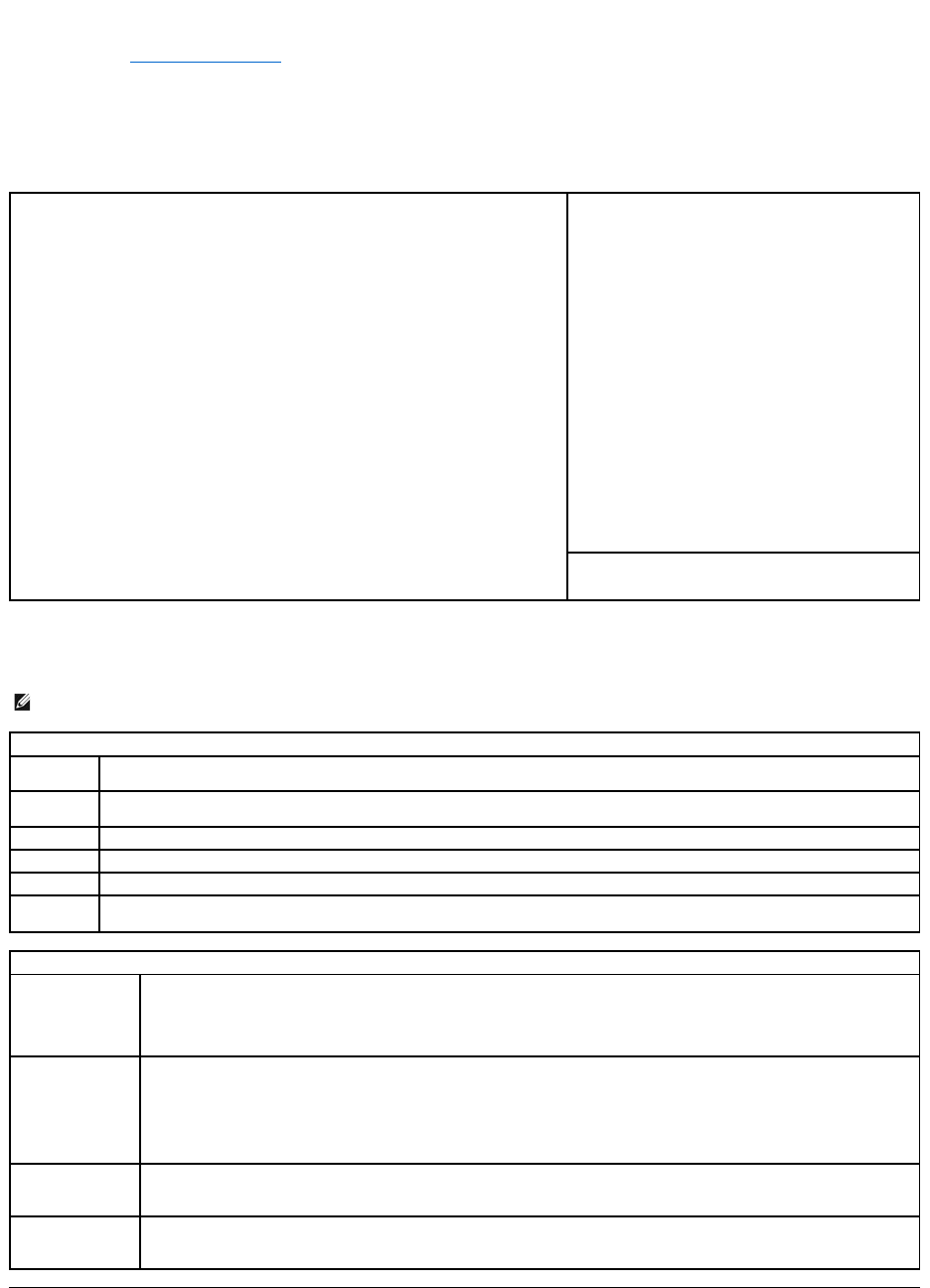
2. WhentheblueDELL™logoappears,press<F2>immediately.
If you wait too long and the operating system logo appears, continue to wait until you see the Microsoft®Windows®desktop. Then shut down your
computer (see Turning Off Your Computer) and try again.
System Setup Screens
The system setup screen displays current or changeable configuration information for your computer. Information on the screen is divided into three areas: the
options list, active options field, and key functions.
System Setup Options
Options List — This field appears on the left side of the system setup window. The field is a
scrollable list containing features that define the configuration of your computer, including
installed hardware, power conservation, and security features.
Scroll up and down the list by using the up and down arrow keys. As an option is highlighted,
the Option Field displays more information about that option and the option's current and
available settings.
Option Field — This field contains information about each
option. In this field you can view your current settings and
make changes to your settings.
Use the right- and left-arrow keys to highlight an option.
Press <Enter> to make that selection active.
Key Functions — This field appears below the Option Field
and lists keys and their functions within the active system
setup field.
NOTE: Depending on your computer and installed devices, the items listed in this section may or may not appear.
Lists the computer name, BIOS Version, Service Tag, Express Service Code, (if applicable), and the Asset Tag. None of these fields can be
modified.
Identifies the CPU type, bus speed, clock speed, and L2 cache size. States whether the processor is Hyper-Threading and multiple-core
capable and whether it supports 64-bit technology.
Lists the type, size, speed, and channel mode (dual or single) of installed memory.
Identifies any installed PCI or PCI Express cards.
Displays current date and time settings.
The computer attempts to boot from the sequence of devices specified in this list.
Diskette Drive
(Internal default)
This option enables or disables the floppy drive. The options are Off, Internal, USB, and Read Only.
NOTE: If USB is selected, ensure that USB Controller setup option under Onboard Devices is set to On.
Identifies and enables and disables the drives attached to the SATA or IDE connectors on the system board and lists the capacities
for the hard drives.
NOTE: These options appear as Drive 0 through Drive 3 for the desktop, mini tower, and small form computers and Drive 0 though
Drive 5 for the ultra-small form factor computer.
SATA Operation
(Normal default)
When this option is set to Normal, the SATA controller is configured for native mode. The Legacy option provides compatibility with
older operating systems.
SMART Reporting
(Off default)
This setting determines whether integrated drive errors are reported or not during system startup.
